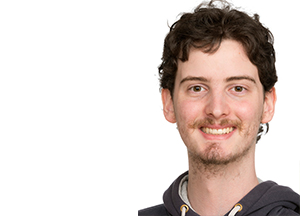
Bernard Field, PhD student, Monash School of Physics and Astronomy
Two-dimensional metal-organic frameworks have received substantial interest as potential new electronic materials, although their interactions with substrates have received little theoretical attention to date. Using density functional theory (DFT) calculations supported by a mean-field Hubbard model, we find a metal-organic kagome lattice which exhibits frustrated antiferromagnetism, arising due to electron-electron interactions. Different metallic substrates can support or suppress this magnetism, as shown by both DFT and experimental measurements.
About the presenter
Bernard is pursuing a PhD with CIs Agustin Schiffrin and Nikhil Medhekar, working on calculating the properties of novel electronic materials using ab initio (first principles) calculations with density functional theory within FLEET’s Research Theme 1.
In 2018, Bernard received the Rodney L Turner Prize for the Best Honours Thesis in Physics and Astronomy, and the JJ McNeill Prize for the Top Honours Student in Physics or Astrophysics at Monash University, for his work on the quantum mechanical properties of many-body systems, investigating the properties of impurities in Bose-Einstein condensates and how these systems depend on temperature.
